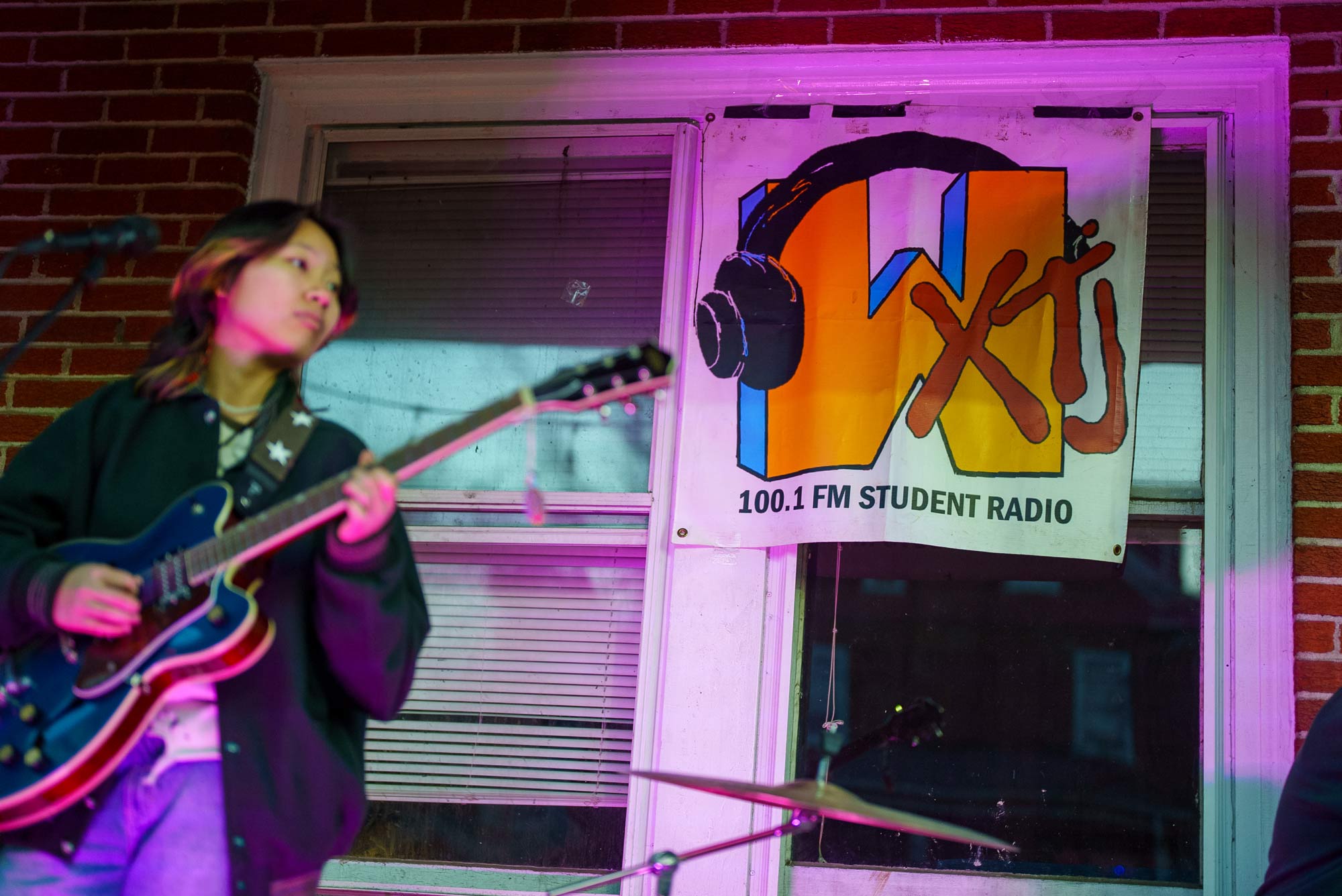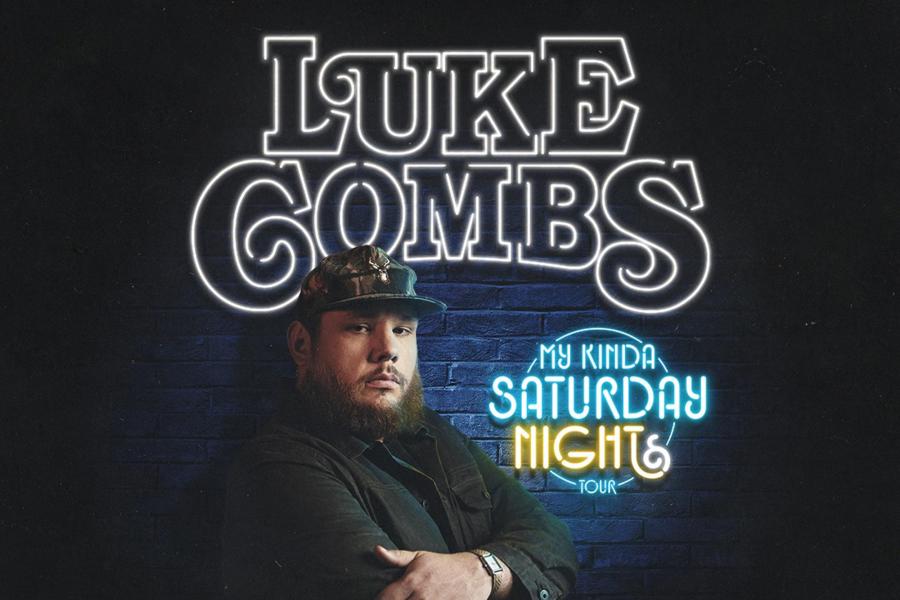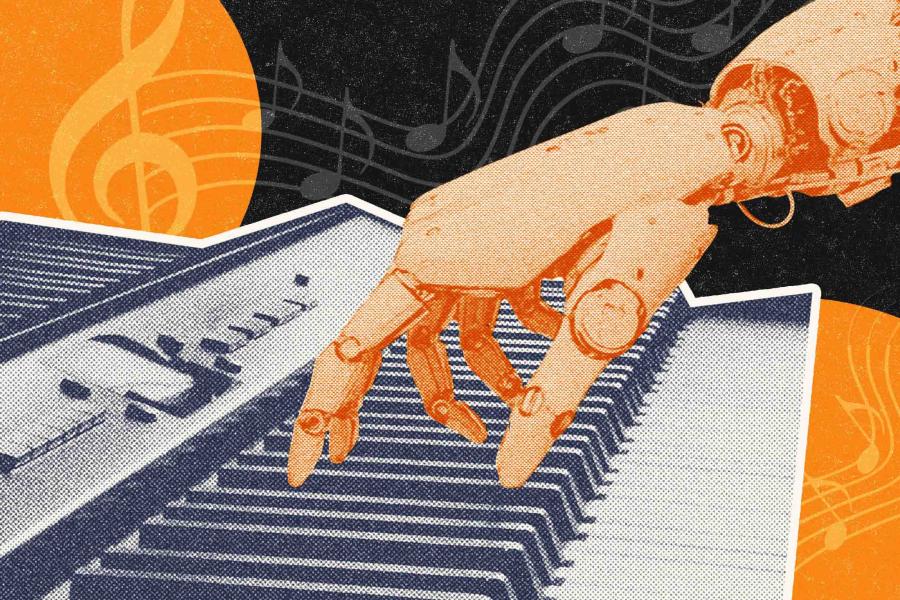Every week before his radio show on the University of Virginia’s student-run station WXTJ, co-director Jacob Hobbs asks himself a question: “What do I want to subject everyone to this week?”
Hobbs, along with fellow WXTJ co-director Mary Hall, hosts “High Up and Low Down,” a radio show that features house music, neo-soul and tracks by artists like Lady Gaga and Charli XCX.
The show, Hall said, is “haphazard.” That’s by design.
“Our station is special because it’s entirely free-form,” Hall said.
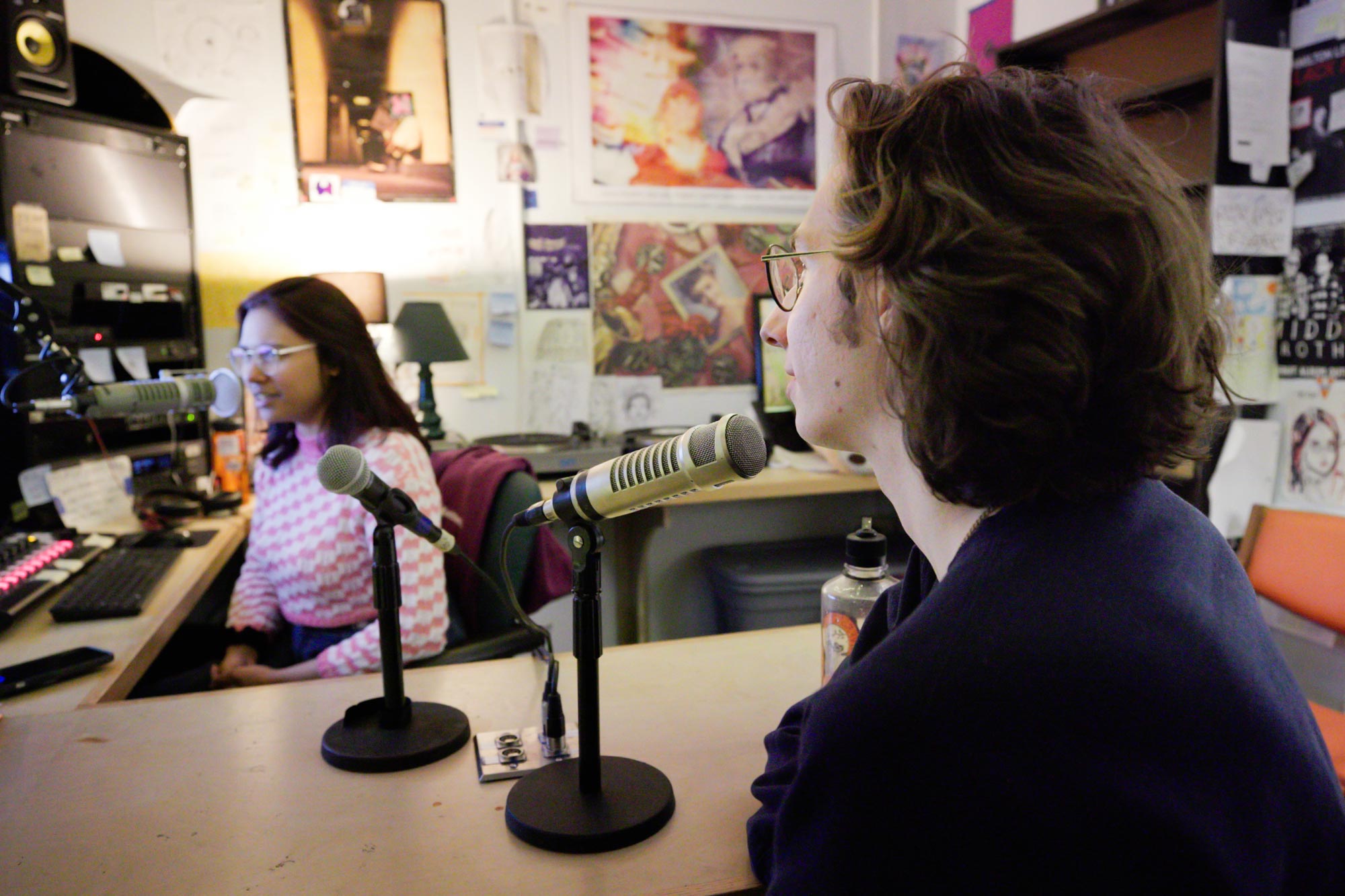
Fourth-year student and WXTJ co-director Jacob Hobbs hosts “High Up and Low Down” with Hall every Wednesday. The show is an eclectic mix of whatever the two of them have listened to that week. (Photo by Kelly West, University Communications)
Before Hobbs and Hall became co-directors, they were first-year students at UVA who wandered into the Student Activities Fair, where the station’s former director, Ashley Park, convinced them separately to join.
Hobbs and Hall hosted their own radio shows for their first three years at UVA, joining forces to co-host their directors’ show every Wednesday evening.
“It’s just two hours of us yapping about the music,” Hobbs said.
Mary Hall:
Hi there, y’all.
You’re listening to WXTJ Charlottesville 100.1 FM
Jacob Hobbs:
WXTJ is the student run radio station on Grounds. It broadcasts at 100.1 FM.
We do tons of different live musical events.
UVA music scene is very much like that jam band kind of vibe, which is fantastic, but there’s also student DJs, jazz musicians, all these different types of musical artists.
So we’ve tried to create a diversity in the genres that we showcase through our events.
Hall:
I think music is something that helps bring people together.
As a college radio station our main goal is to just make sure that people have an outlet of self-expression.
It’s so incredibly important that everybody can feel seen and heard, quite literally, with the music that they like.
WXTJ is just a place of community, a place of love, a place of music and sharing that love with music, with everybody.
Hobbs:
That musical community is just so fun because it has nothing to do with academics.
Just seeing, like, hundreds of people having just the time of their lives and knowing that you played a very key role in that makes it all worth it.
Hobbs, Hall and their fellow DJs join a tradition of UVA student DJs that includes the late Silver Jews frontman David Berman, Pavement frontman Stephen Malkmus and, more recently, indie singer-songwriter Kate Bollinger. Park, who recruited Hall and Hobbs, now works for a nonprofit radio station in Portland, Oregon.
WXTJ started in 2013 as a completely student-run, free-form station. While DJs might have certain themes or genres they stick to, there is no mandate that they play all top 40, country, hip-hop or any other genre, unlike most radio stations. Originally a webstream, WXTJ now broadcasts over the air at 100.1 FM. It’s a sister station to the other UVA-licensed radio station, WTJU 91.1 FM.
One DJ offers book recommendations between songs. Another focuses on sad music. A previous DJ divvied up their two hours into an hour of heavy metal and one of soothing sounds, designed to relax a listener or even help them sleep.
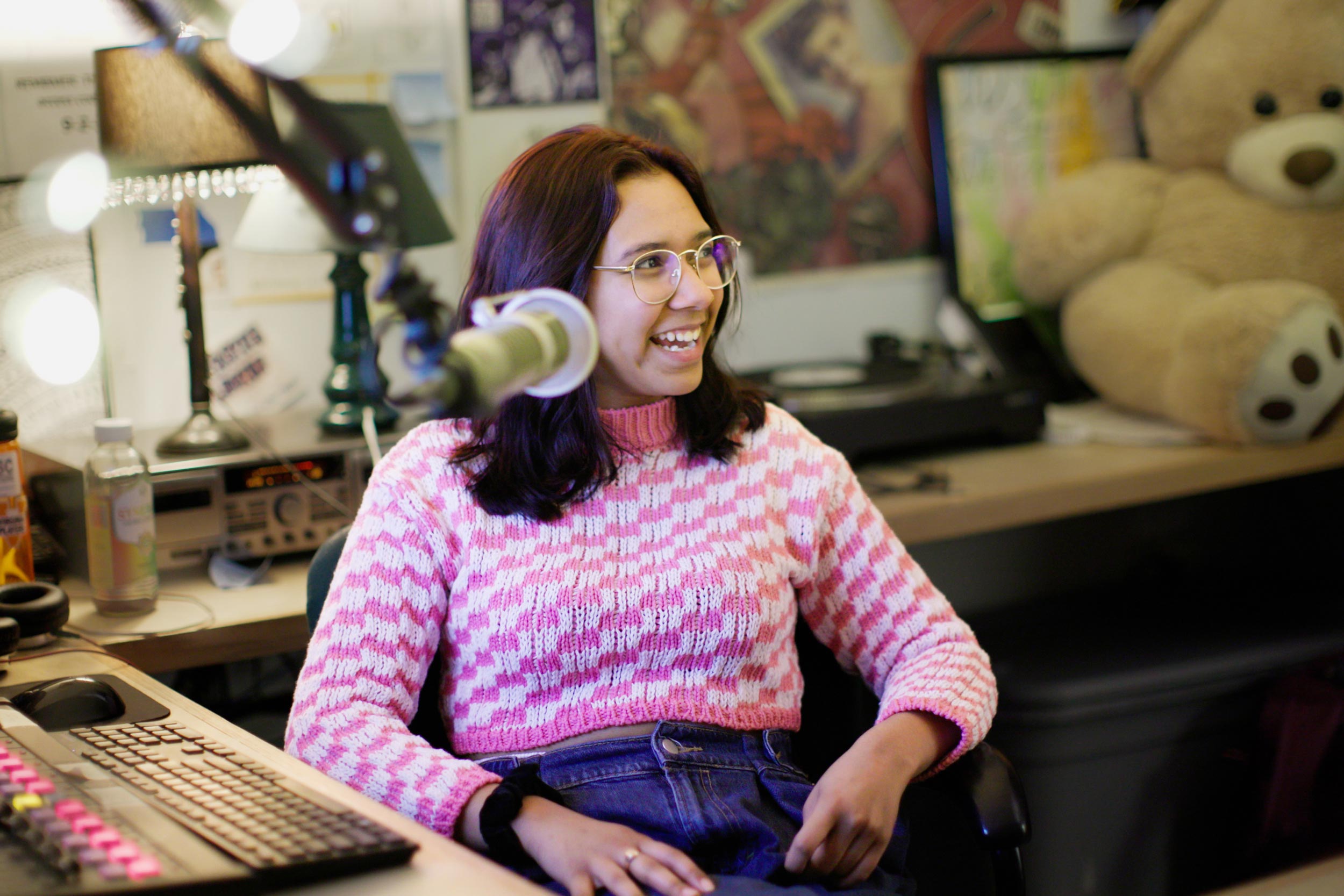



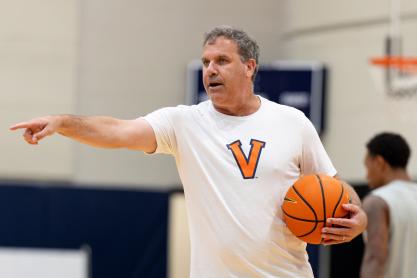


.jpg)
